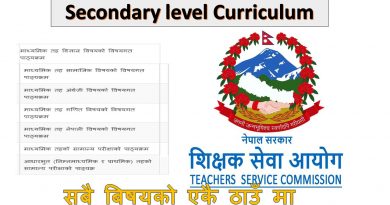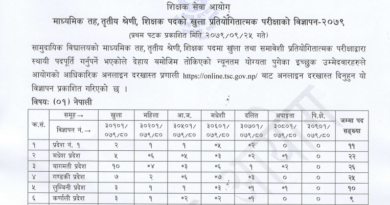Teacher’s Guide English Grade 10

Download Here PDF
Source :- MOECDC
This teacher’s guide (TG) of grade ten English (2017) has been prepared with the aim of
helping the teachers to implement the curriculum and the textbook effectively in the
classroom. The new English curriculum of grade 10 is based on a communicative approach to
language teaching. The communicative approach to language teaching emphasizes the
teaching of language functions along with grammatical items and language structures. The
thrust of the new curriculum is the development of communicative competence in the
students. This means that students should be able to communicate both in spoken and written
English, not only by using grammatically correct sentences but also by using the appropriate
utterances according to the demands of the situation.
The new English curriculum and the textbook of grade 10 are different from the old one. It is
therefore, essential to familiarise the teachers with the new concepts that they need to follow
while using the textbook developed in the spirit of the new curriculum. Thus, the Curriculum
Development Centre has developed this teacher’s guide taking into consideration the practical
problems that teachers face while facilitating the learners in the classroom.
This teacher’s guide assists the teachers in three basic ways (1) by providing methodological
suggestions to deal with the lessons, (2) by providing answers to the exercises given in the
textbook including the models/samples and (3) by suggesting and providing additional
resources useful for dealing with the units of the textbook.
Although most of the techniques and activities included in this TG are communicative and
task-based in nature, the activities do not rely solely on any one particular approach or
method. Since the use of methodology depends on the cultural context, the political context,
the local institutional context and the context constituted by the teachers and learners in their
classrooms, the teachers are suggested to consider those contexts before deciding any method
or technique of teaching.
Structure
Each unit in this TG is divided into three parts: unit outline, learning facilitation process and
additional resources. The first part, unit outline, provides the general overview of the unit
such as the things to teach, content theme or topics, expected achievements of the students,
soft skills that have been incorporated, teaching resources required for this particular unit and
estimated periods allotted to the unit. The second part, learning facilitation process, provides
a detailed lesson activities along with answers to the textbook exercises. Likewise, the third
part, additional resources, includes various resources for the teachers and learners. The script
of the audio for listening skill has been kept at the end of each unit under additional resource
section.
Lesson organisation
Each lesson in this TG has five elements: (1) content from the textbook, which provides
information about which textbook exercise has been dealt with in that lesson, (2) materials
required for this lesson, (3) lesson activities, i.e. the detailed methodological procedure for
lesson activities, (4) extended activity and (5) teacher’s reflection on the lesson. Extended
activity is the task which is not given in the textbook. This activity is optional and can be
ii
used if the teachers have time to do. It can be assigned to the more capable students who
finish the given tasks earlier. Remember that this activity is not obligatory for the learners.
Answers to the textbook exercises have been included at the end of each activity. For the
answers which are almost fixed, the phrase “Suggested answers” has been used and for the
answers where there is the possibility of more than one answers, the phrase “Possible
answers” has been used.
In each lesson, activities have been divided into three sections as they are in the textbook:
Engage yourself, Study time and Follow-up activity in case of reading and listening and
Engage yourself, Time for writing/speaking and Follow-up activity in case of writing and
speaking. The main aims of the activities under Engage yourself is to arouse the students’
interest in the main task, to motivate them and to provide background for the task or the text.
Therefore, the Engage yourself activities should not be lengthy. Most of class time should be
spent on the activities under Study time or Time for writing/speaking. Follow-up activities
are more like post-reading and post-listening activities in case of reading and listening; they
are related to production activities in case of speaking and grammar; and they are mostly
related to revising, editing and preparing the final version in case of writing.
The periods required for each unit are suggested based on the curriculum. However, there
may not be one-to-one correspondence between the periods suggested in the curriculum and
the in teacher’s guide. The teachers can adjust the periods themselves considering their own
context.
The fun corner included in the textbook is just for learning and fun. Therefore, it should be
conducted in a simple and easy way so that it would not be a burden for the students.
New concepts
Some new concepts have been introduced in the new curriculum like soft skills and
competencies. The secondary level English curriculum of grade 9-10 is competency-based
and soft skills-integrated.
Soft skills
Soft skills can be defined as intra- and inter-personal socio-emotional skills, essential for
personal development, social participation and workplace success. The four macro soft skills
include co-operation skills, thinking skills, personal skills and innovation and business skills.
There are several micro skills under these macro skills. These skills can be developed in the
learners by involving them in meaningful activities like pair work, group work and project
work. Project works are very useful for the development of soft skills. Therefore their use
must be maximised as far as possible.



